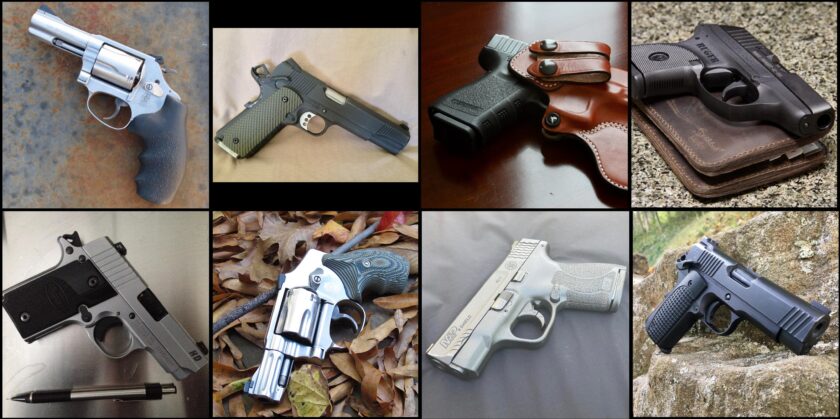I have carried several different firearms over the past two decades. I recently did an accounting of the guns that I have considered my “carry gun.” The list was longer than I anticipated – six pistols and three revolvers. Since I’m sort of on a retrospective kick lately, let’s take a look at my concealed carry handguns, and more importantly, what I learned from them.
This article contains affiliate links.
Phase I and Phase II
This isn’t a self-congratulatory pat-on-the-back-fest. I’ve made some objectively bad carry choices. I’ve also made some pretty good ones. I break my concealed carry journey down into two parts: the first ten years (Phase I) and the second ten years (Phase II). Let’s look at how I delineate those two segments of my life, then we’ll get into the guns themselves.
Phase I Concealed Carry Handguns
I was interested in concealed carry and I wanted to carry. Very much so. However, I was largely unable to due to living/working situation. I was in the military during the first part of this phase. Firearms are (or at least were at the time) strictly forbidden on base except for very specific purposes (like hunting or attending a sanctioned competition). In order to carry when I was off post, I had to leave long enough for it to be worth my time, then run by my friend’s house and pick up my pistol. Then I had to stop back by there and put it back in the safe before going back on base.
After my military time I worked overseas and carried my duty sidearm at all times. Sometimes it was concealed (around the embassy) and sometimes not. When I was at home during this period I still carried fairly little. My wife (at the time) was not a fan of concealed carry. Eventually we parted ways but that put a huge amount of friction on carrying. It was often just easier not to. Handguns in this category were carried some…but not all that much. Certainly not on an everyday basis.
I also have what I consider a Phase IB. During this time I worked on base as a civilian. That meant I couldn’t carry to work, but I tried to carry most other times. Since I was still unarmed more than I was armed, this still belongs in Phase I.
Phase II Concealed Carry Handguns
Once I stopped working full-time on base I began to carry much, much more. I transitioned immediately to all-day, every-day carry, from waking to bedtime. I became much more of a student of concealed carry, and a much more serious practitioner. During this period I also made more thoughtful choices about my concealed carry equipment, including firearms. I became much more educated on support equipment like belts and holsters. This phase has been ongoing for about a decade now.
Phase 1: S&W Model 60, .357 Magnum
The S&W 60-15 was the first handgun I ever purchased explicitly for the purpose of concealed carry. I was in my early 20s when I bought this revolver. In hindsight it wasn’t a terrible choice. The 60-15 is the 3″ version of the “Chief’s Special,” a stainless steel S&W J-Frame revolver. It is chambered in .357 Magnum, holds 5 rounds, and has adjustable sights. It’s sort of a “deluxe” J-Frame. I purchased a Kramer IWB holster for this gun, around the time my first concealed carry permit showed up in the mail. I owned this revolver for about ten years, after which I gave it to my father as a gift. As the only compact handgun I owned I did carry it on and off throughout that whole period, never being very skilled with it. This gun was a poor choice for me considering my low level of revolver skill at the time.
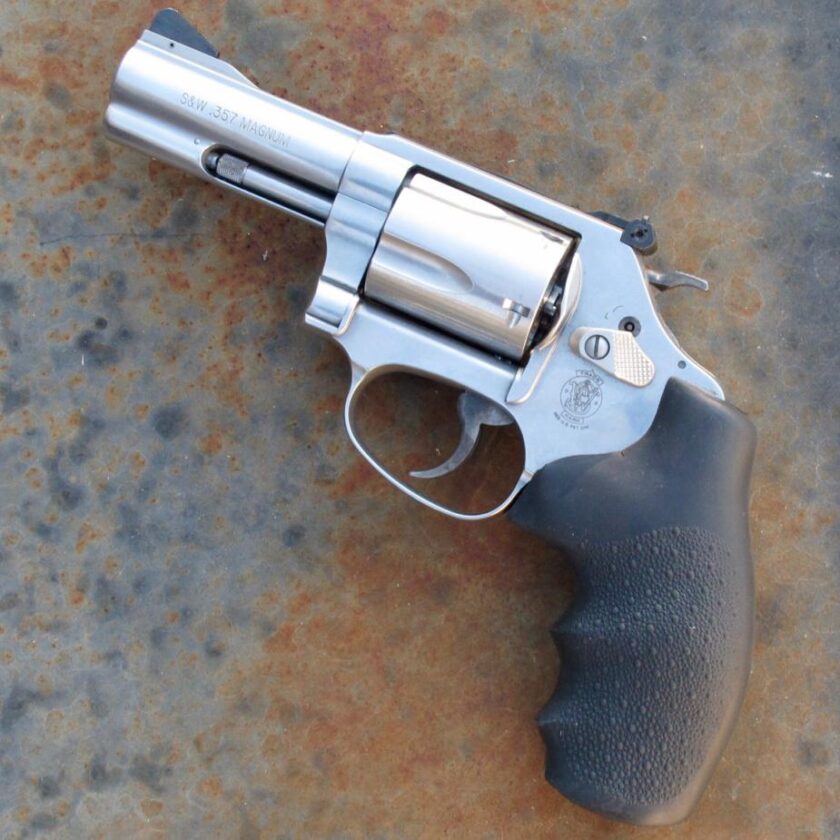
What I Learned from the 60-15
Revolvers are not “easy” guns. Especially small revolvers, and especially for those of us coming from semi-autos. Not all semi-auto skills are transferable to wheelguns. Small revolvers can suck to shoot (hence the huge grip on this one, which defeats a lot of the point of its small size). Not everyone is up to the task of shooting a small-framed revolver well. At this time in my life I was not. I would later learn that the magical missing ingredients were knowledge, practice, and dedication to revolvercraft.
Phase 1: Springfield M1911A1, .45 ACP
The next of my historical concealed carry handguns was the Springfield M1911A1 in .45 ACP, a near-perfect match for my issued sidearm. This was not a “Loaded” model Springfield – not an Operator or TRP or whatever. Just a regular 1911 with the normal enhanced features (beavertail, lowered/flared ejection port, ambi safety, etc.). I added a few touches, including the Simonich Gunner grips, skateboard tape across the front strap, and mag funnel. Other than that not much was done to it. This was a phenomenally reliable 1911 – one of the most reliable I’ve ever owned. I put around 15,000 rounds on this gun and sold it several years ago.
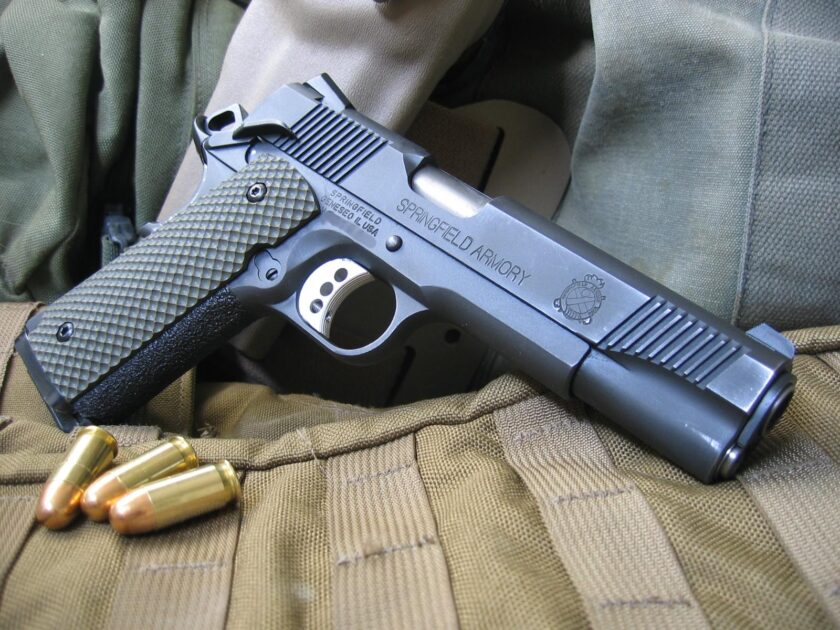
What I Learned from the Springfield 1911
Carrying a big gun is doable but it requires a lot of effort. I didn’t know a whole lot about holsters back then. I carried this pistol strong side, in a decent leather pancake holster with a thumb-break. It was the same holster we used for concealment at work. At work there wasn’t much fussing about the perfect holster. There was, however, a whole lot of “suck it up and make it work!” That’s the attitude I adopted in my personal life….for a while.
Once I got out of the military I learned that carrying a full-size, 5-inch 1911 was untenable. “Sucking it up” wasn’t something I was willing to do. Maybe once in a while, but not on a day-in, day-out basis. This gun also taught me that there is tremendous advantage in carrying the same gun (or at least the same type of gun) all the time. Even though I had to leave my work gun at work, this gun was just like it. After a couple hundred thousand rounds of tough, high-quality training, carrying the same thing made a ton of sense.
Phase 1B: Glock 19, 9mm
The first handgun I purchased when I stopped traveling internationally for work was a Glock 19. Even though I couldn’t carry at work (or on the way to or from work) I still wanted to carry more, and made some effort at it. The first step was the right gun. I bought a Gen3 Glock 19. I bought a couple IWB holsters. This was the first of three Glock 19s that I’ve owned in the last ten years, trying to “get on board” with prevailing wisdom. The G19 just doesn’t work for this guy. I wish it did. I carried it on and off for about a year, and held onto it for a couple more years before letting it go.
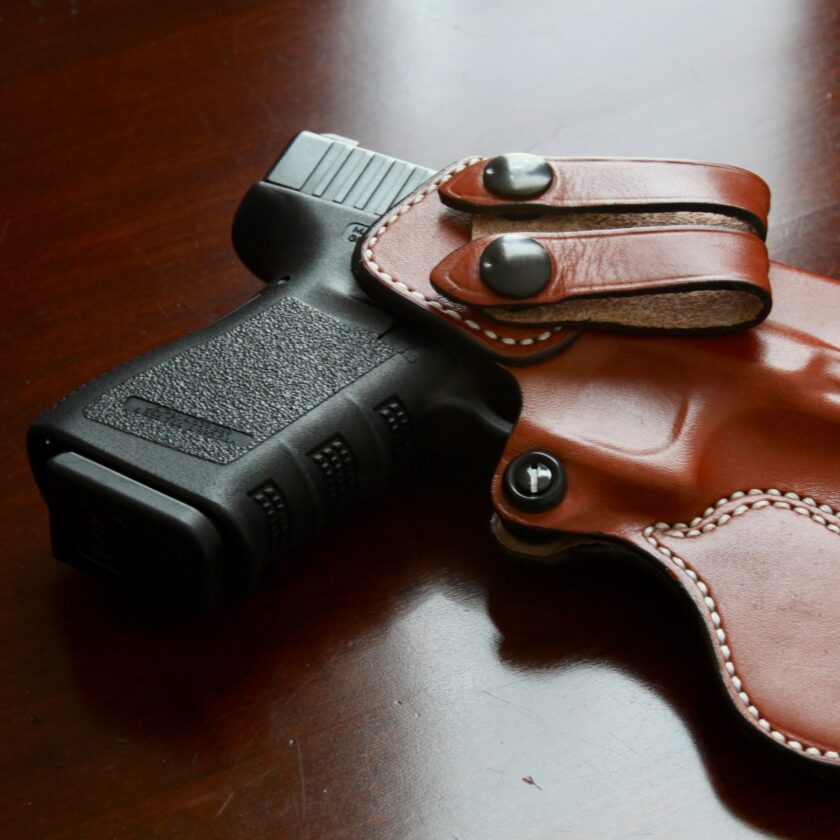
What I Learned from the Glock 19
The internet doesn’t know what gun is right for you. The G19 is a fairly big gun for a guy with a 29-inch waist. Secondly, against objective time and accuracy criteria I don’t shoot the Glock 19 as well as other guns. Behind the triple criteria of reliability, reliability, and reliability, you’re going to have to find out what works for you. The internet is an excellent resource. It’s also great at finding the 90% solution. That’s great…unless you’re in the 10%. The internet is a guide, not holy writ.
Phase IB: Ruger LCP, .380
The next gun I bought swung to the other end of the size spectrum. It was also the shortest-lived of my concealed carry handguns: the Ruger LCP. I hardly carried this gun at all and only owned it for a couple months before letting it go. First, I didn’t really dig pocket carry. Second, this thing wasn’t any fun to shoot – it slapped the crap out of the web of my hand. Thirdly, the sights (or lack thereof) made accuracy pretty iffy. Great carry gun in theory. In practice…
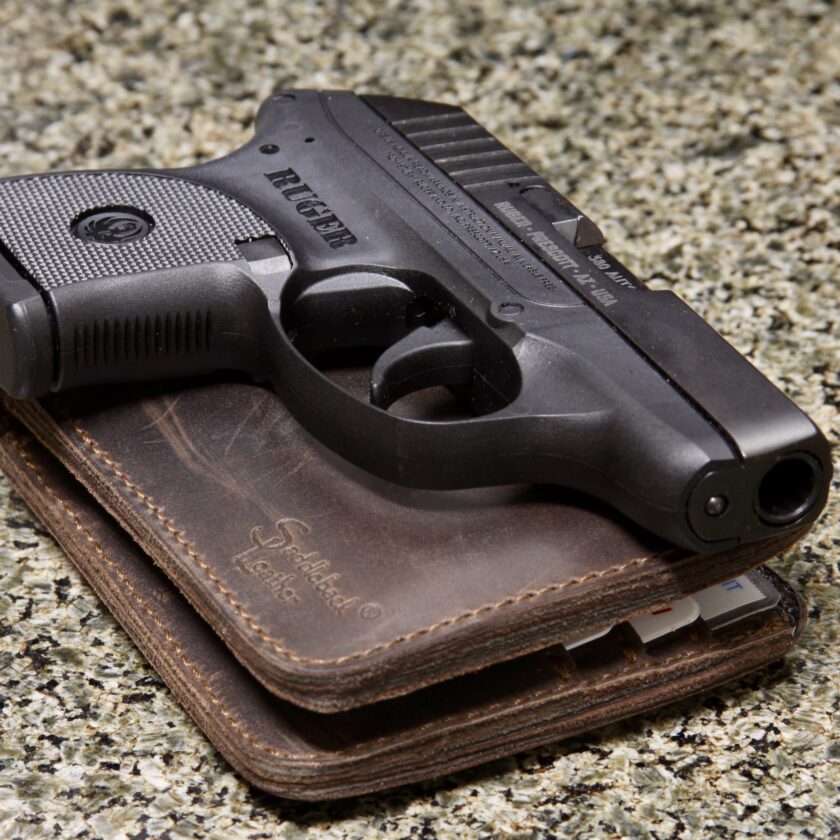
What I Learned from the LCP
There is a point of diminishing returns in regards to size, and a carry gun should meet some accuracy/shoot-ability criteria. This gun was so small that everything suffered. Carry was possible in nearly any situation but I didn’t have very much confidence in my abilities with it. My future handguns would all be capable of decent accuracy out to, say, 25 yards. They would all be substantially more controllable. There is a place for the LCP, but it’s place isn’t as my primary.
Phase II: Sig Sauer P238 – .380 ACP
Next up in my historical concealed carry handguns is the Sig P238. Mine was a actually the “HD” model and had a steel, rather than aluminum, frame. This little .380 is very 1911-like, and is in fact a much-improved copy of the Colt Mustang. Naturally I took to the safety and manual of arms like a duck to water. What really sold me on this gun was the reliability and full-sized sights. The sights on this gun are incredible. They are full-sized night sights, like those found on a “real” pistol. This gun is capable of some insane accuracy for a micro-compact .380.
On to reliability… I put more rounds through it than most .380s see in three lifetimes (over 2,000 rounds). I’ve had a very, very small number of malfunctions. Unfortunately I didn’t keep a detailed log for this gun (as I do with my guns now) so I’ll put it this way: I would unhesitatingly trust this gun. Only in looking back did I realize what an important part of my concealed carry journey this pistol was. I carried this gun as often as I could considering the prohibition on carry on federal facilities that my job imposed. As soon as I left that job this gun went into my waistband and stayed there.
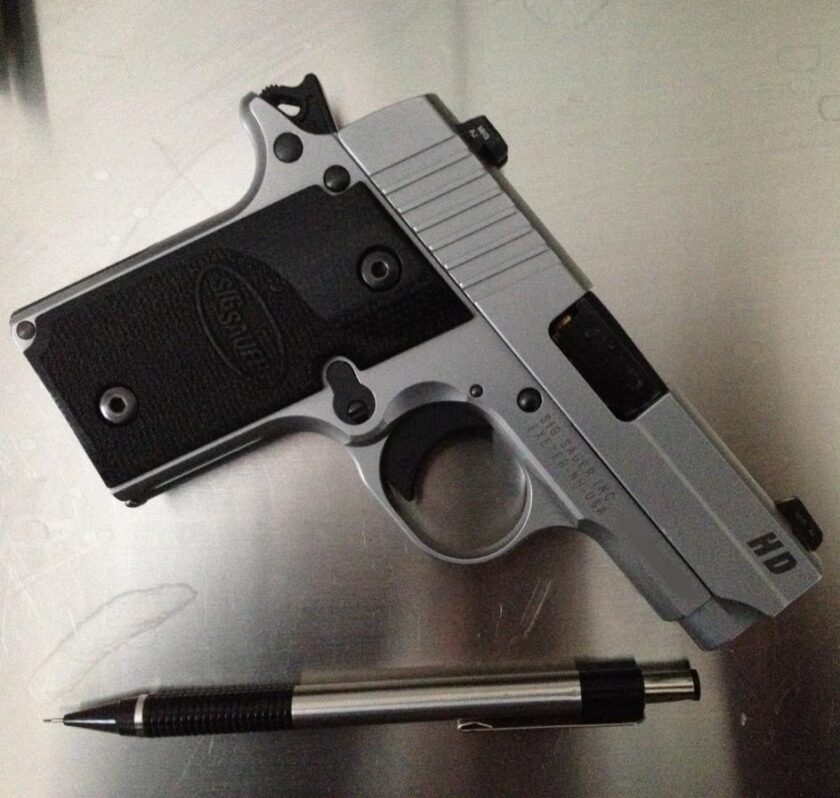
What I Learned from the Sig P238
Comfort is extremely important! This was a HUGE lesson. Very often gun writers will say that you can “forget” a gun is there. I’ve never forgotten I was carrying, but I never really thought about it with the Sig P238. I wore it from the moment I got dressed until I went to bed. It stayed on me while teaching, splitting wood, tending the garden, or at funerals, on dates… I wore this gun every single day that it was legal during my vanlife excursions. Never was it uncomfortable, rarely did I have to adjust it, and not once did I leave it behind. Comfort may seem like a secondary consideration but it’s actually a pretty big deal.
S&W 640 Pro Series – .357 Magnum
Inspired by Chris Baker’s “Wheelgun Wednesday” series (and a stint in a capacity-restricted state) I purchased a S&W 640 Pro Series. I started learning from scratch. With the help of YouTube, live classes with Mike Seeklander, Chuck Haggard, and Greg Ellifritz, lots of ammo and even more dry practice, I became pretty decent with revolvers. I learned so very much on this revolver – it’s hard to overstate just how much. Instantly I was a revolver aficionado.
I carried the S&W 640 Pro series daily for almost three years. I still own it and I still carry it when I need a deeper-concealment gun. The Pro Series is the top-of-the-line J-Frame. It boasts some features found on few other revolvers. First, it comes with excellent sights, and night sights at that. I don’t absolutely require night sights but these are very nice, especially for a revolver. Second, this gun ships without S&W’s internal locking system – a very nice little upgrade. It also has a very long extractor throw to ensure that empties clear when reloading. This is a fantastic little revolver that I mostly carried in an appendix holster from Dark Star Gear.
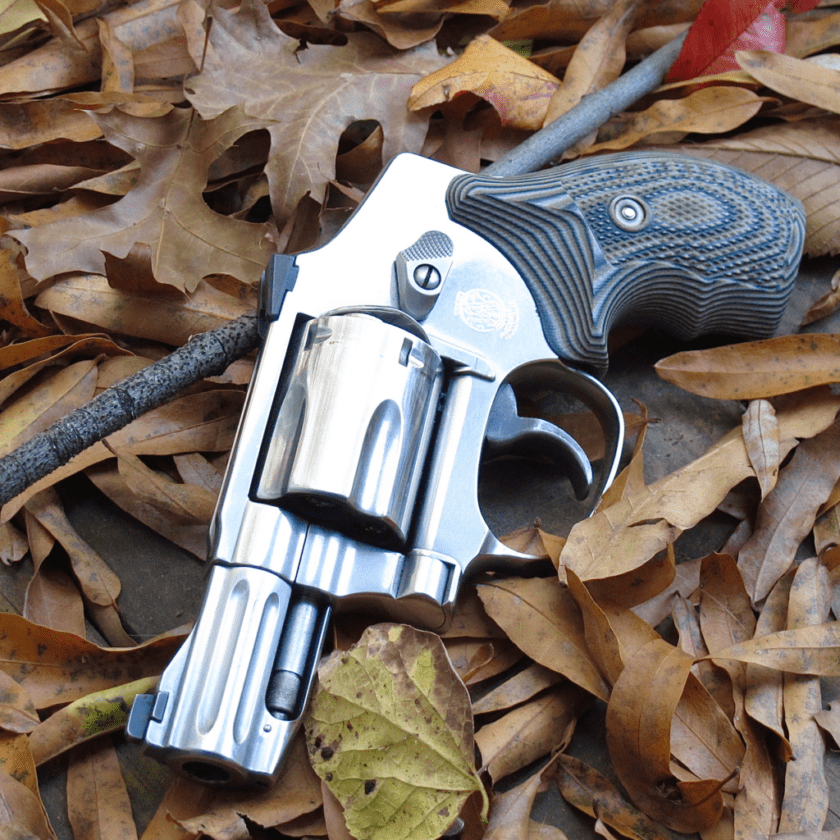
What I Learned from the 640 Pro
I learned that J-frame revolvers can be insanely effective in skilled hands. The missing ingredient during my previous foray into J-frames was wisdom. I didn’t know what I didn’t know. I didn’t seek knowledge, revolver-specific training, nor did I spend a great deal of time practicing. This deficit left me completely unaware and unskilled. The 640 Pro taught me what J-frames are capable of. In a nutshell a J-frame is capable of what the operator its capable of. My first J-frame was only a bad concealed carry handgun because I was a bad operator.
S&W M&P Shield 9, 9mm
This was another short-lived concealed carry handgun in my waistband. There wasn’t anything wrong with it – indeed the M&P Shield is a fantastic pistol! It was reliable, accurate, and ergonomic. In the Dark Star Gear holster I carried it in it was also extremely portable. I upgraded to this pistol from my 640 because of the Shield’s benefits: larger capacity, more potent, highly developed 9mm defensive ammo, and cheaper practice ammo. In the end I only carried it from April – November of 2018, just six months. Right around the time I transitioned into the Shield I placed an order for a custom 1911 that would become a long-term carry gun.
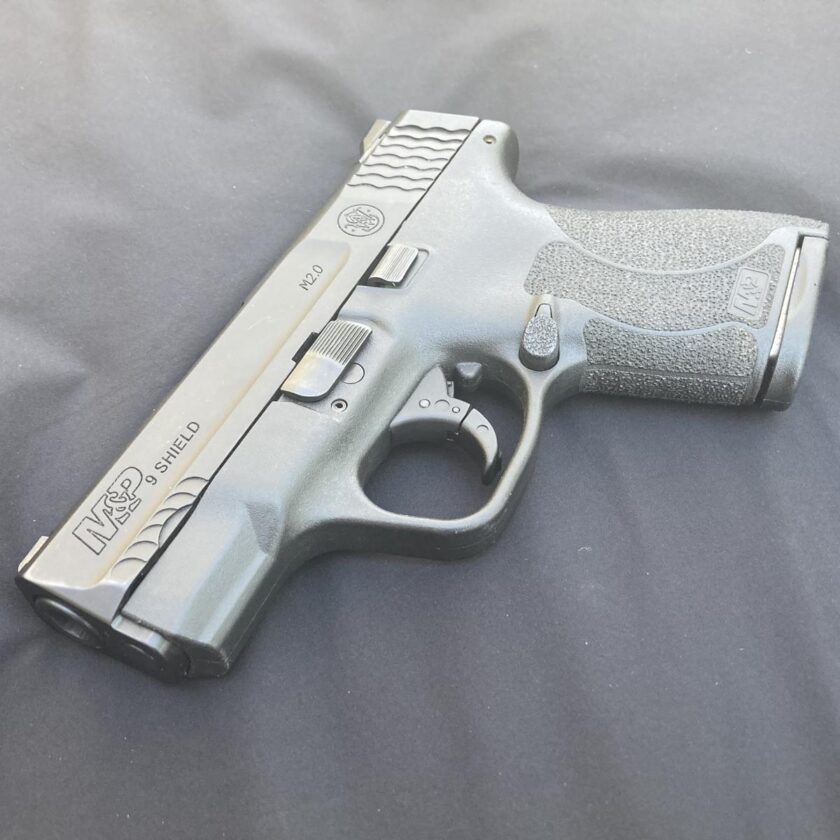
What I Learned from the Shield
I learned how to transition to a new carry platform. Coming from three years of dedicated, focused revolver training and carry required some serious re-wiring of the circuitry. I developed a transition plan that lasted several months, and followed it before I ever carried this gun outside the house. I intend to write an article on transitioning carry platforms soon.
Nighthawk Custom 1911, 9mm
Finally, in late 2018 I my Nighthawk Custom 1911 showed up. After months of waiting it arrived at my FFL. I’ve written about this gun at great length and won’t bore you with it here (Part I, Part II). I’ve also written about why I chose a 9mm 1911, a pretty unconventional carry platform. Of note I experienced a good deal of reliability issues early on with mags purchased from Nighthawk. Once I switched to Wilson Combat ETM magazines my reliability issues disappeared. I carry this gun in two holsters: a Precision Holsters Ultra Appendix (I have a JMCK George on the way) and a horsehide belt scabbard from Kramer.
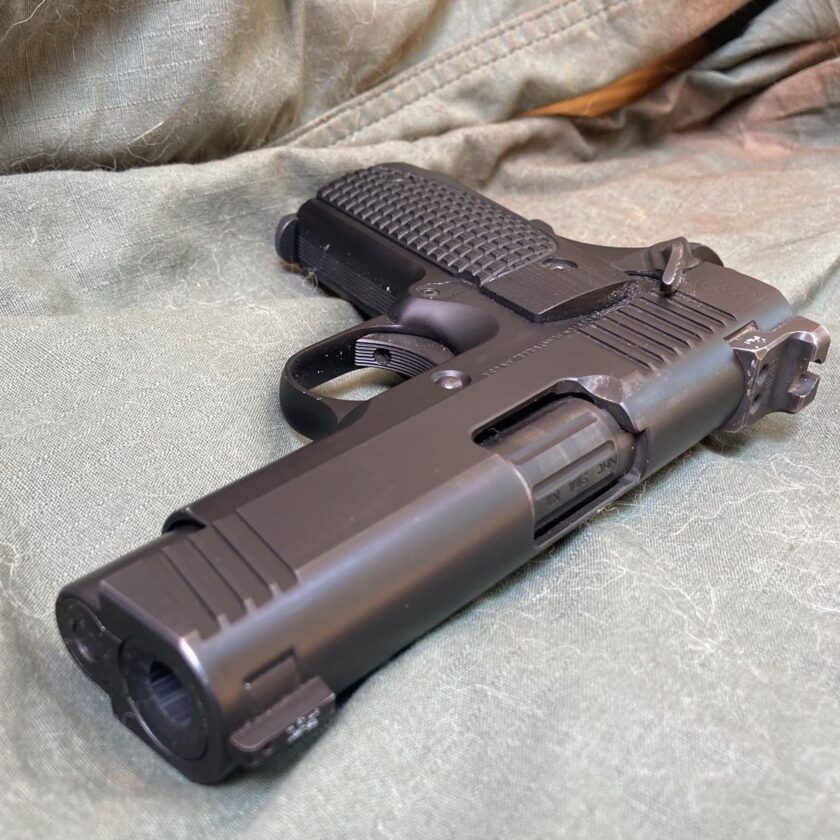
What I Learned from the Nighthawk 1911
It pays to know what works for you. The only way to find out what works is training and experience. I purchased too many of the above guns with incomplete information. They were purchased without me really knowing what worked for me and what didn’t. Some of those guns still offered me valuable experience, but at a pretty high cost. It pays to know what you like. I selected each feature on this firearm. I chose each one based on my body of experience and training. As a result this has been a phenomenally good carry pistol for me. Though it might not always be my primary carry pistol, it’s never leaving my collection.
Lessons Learned?
So what can you and I learn from my historical concealed carry handguns? I definitely learned some pretty good lessons from each of these handguns. Are there some bigger lessons that can be drawn from the whole?
Train, practice, train, practice, train, practice, repeat.
There are a lot of one-liners like, “it’s the Indian, not the arrow.” They all boil down to this: your choice of hardware is largely irrelevant without skill developed through training and practice. So what if you carry a full-size, long-slide pistol with a hi-speed aftermarket trigger, custom milled slide, red dot, suppressor-height sights, a WML, and a spare 20-round mag if you can’t shoot it? Conversely, your hardware is also largely irrelevant if you do train and practice. As I learned, with dedication a J-frame revolver can bring more to the table than a Glock 17.
Caliber/chambering is basically irrelevant to me.
In addition to three 9mms, I’ve carried a .45 ACP, two .357 Magnums, and two .380s. and somehow I lived to tell about it! Unless something major changes it’s safe to say that I’ll stick with 9mm for the foreseeable future. Nine millimeter has some undeniable benefits including greater capacity, cheaper ammo, and more controllable recoil. Most gun guys are quick to tell you that caliber doesn’t matter…unless you choose something other than 9mm, then they’ll tell you exactly how much caliber does, in fact matter.
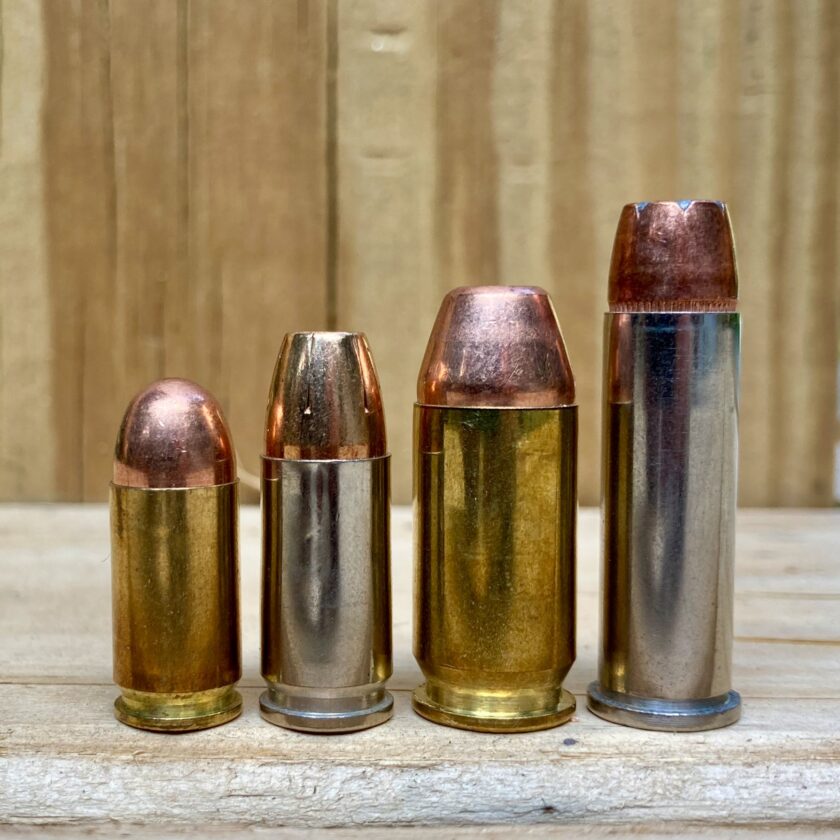
Personally, I don’t feel that it matters a ton either way. Sure, .40 and .45 recoil a bit more than 9mm and you lose a round or two of capacity. Is one or two rounds or an extra tenth of a second on your splits going to mean the difference between success and failure? Let’s be honest: probably not. Let’s also be honest: switching calibers probably won’t be your salvation, i.e. if you suck with a .40 you will probably also suck with a 9mm. There are some limits to this line of thought; the smaller the gun the more caliber impacts recoil. But in mid-sized guns popular for carry, caliber probably won’t make you a loser any more than it will make you a winner.
As I said, I’d still prefer a 9mm. I’ll still recommend 9mm to others looking for a first gun, or looking to migrate into a new carry gun. But if I owned an otherwise viable firearm in .40 or .45 I wouldn’t put $1,500 on the credit card to get into a 9mm (cause you need new holsters and magazines and ammo to confirm reliability, etc., etc…right?).
Skill and equipment impact each other in an endless loop.
The more skill you have, the more use you can make of sub-optimal equipment. As I have said previously, a highly skilled operator can make more use of a J-frame revolver than the poorly skilled with a full-sized, full-capacity pistol. On the other hand, ideal equipment in the hands of the skilled user can significantly increase his or her capability, but there is a point of diminishing returns. Is a 5″ M&P a substantial upgrade over an M&P Compact? Probably not enough to merit carrying the much larger gun; the law of diminishing returns still applies.
A small gun reduces capability but is more portable. With low skill these guns bring very little to the table. A high level of skill and recency can make up for many of the shortcomings of a small gun. High skill with a larger (or otherwise more capable, i.e. via magazine capacity, etc.) gun equates to more capability, but less portability. Finding this balance is the job of the end-user. There are no easy answers here. If you own a Ruger LCP and a Glock 19, the Glock clearly has more capability. If you won’t carry it due to size/weight that capability has been 100% negated. So how do you find that balance?
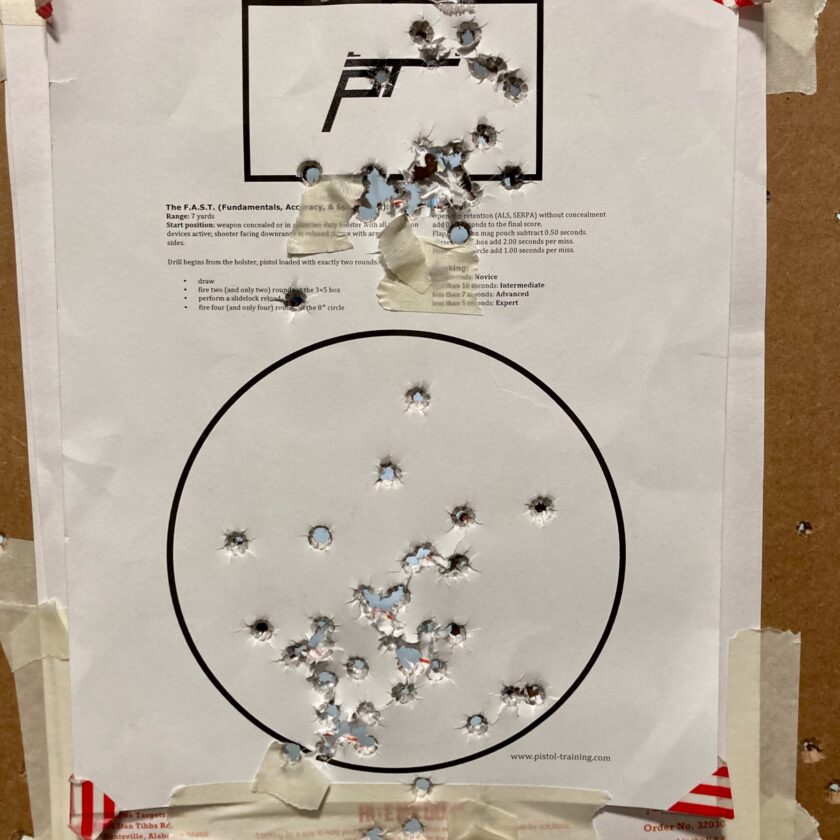
Stay Tuned…
The search for the answer to that question will be the topic of some future articles here. I am currently testing a candidate for a potential new carry gun. Why the gun in question? What does it do better, what does it offer, and where does it come in on the portability scale? How is that influenced by my peculiar life needs? Stay tuned!
I hope you’ve learned something from this retrospective, other than that I have a short attention span. Hopefully you can learn from my mistakes and save yourself some money and heartache.
